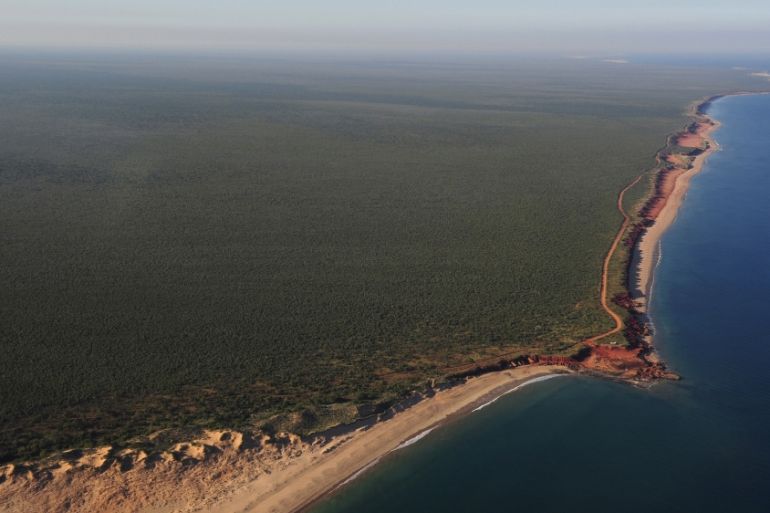Cyclone Hilda batters The Kimberley
Western Australia hit by flooding rain and damaging winds

Cyclone Hilda has brought damage and destruction a remote part of Western Australia.
The Kimberley is the sparsely populated northern part of the state, made up of dramatic wilderness scenery and small towns, reliant on tourism and mining.
Keep reading
list of 4 itemsAre seed-sowing drones the answer to global deforestation?
Rainfall set to help crews battling wildfire near Canada’s Fort McMurray
How India is racing against time to save the endangered red panda
Some of these settlements have been affected by Hilda, which has dropped heavy rain on the region since Tuesday.
As a Category I cyclone (sustained winds of 63 to 88km/h), Hilda has produced gusts of up to 140km/h. These winds have caused structural damage at the Aboriginal community at Bidyadanga and the Ramada Eco Beach Resort.
Flooding is also likely to have been a problem with many areas, including Broome. The town is one of the larger settlements in the region and has reported between 100mm and 200mm of rain since it began falling on Tuesday.
A 48-hour accumulation of 429mm at Cygnet Bay on the Dampier Peninsula was reported by the Bureau of Meteorology. This represents five times the monthly average rainfall and was the largest rainfall accumulation here in 50 years.
Hilda has weakened considerably over the past 24 hours. It lost the energy it garnered from the Indian Ocean as it continued southwards, over land. Despite the rapid decrease in winds, it is possible that the rain from this system will continue through Friday, with another 50 to 150mm of rain causing further flooding.
Cyclones can be deadly events in Western Australia. A cyclone that hit in March 1935 wiped out the pearl fishing fleet, based around the nearby Lacepede Islands, killing 141 fishermen.
As a result of improved weather forecasting and warning systems, fatalities from cyclones a very rare event nowadays. The last storm to result in any fatalities was Bianca back in 2011, which killed two people.
Australia’s cyclone season begins at the end of November, although the main onset date is usually December 28, retreating around March 13.